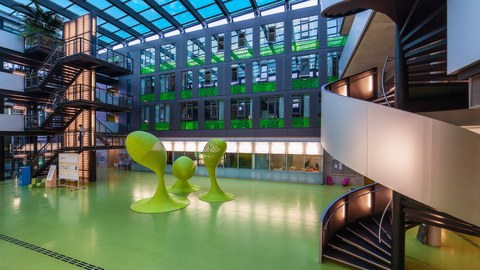The Chair of Elastomeric Materials introduces itself
Elastomers based on cross-linked rubbers, commonly referred to as ‘rubber’, form the core of research and teaching at the professorship. The focus is on the development and characterisation of elastomeric materials for high-performance applications and as system components, which is carried out in the ‘Elastomers’ research department at the Leibniz Institute of Polymer Research Dresden e.V. (IPF).
 © TU Dresden
© TU Dresden
Rubber - The elastic fascination
Elastomers, familiar to most of us as "rubber", i.e. cross-linked soft polymers with a high reversible deformation capacity, are used as functional materials in a number of specific applications, of which tires are certainly the most obvious. However, elastomeric materials can also be found in almost all fields of technology, as functional elements in mechanical engineering as well as in medical technology, plant engineering and aerospace. Due to their unique material properties, the use of elastomers - whether visible or (often) invisible - is usually essential for product functionality. One example of this is the reliable fulfillment of the sealing function of profile seals under sometimes harsh mechanical, thermal and chemical conditions.
The required material performance can often only be ensured in combination with other materials, e.g. reinforcing fillers, in addition to the necessary wide-meshed chemical cross-linking of soft-elastic rubber polymers. Elastomers for technical applications are therefore often composite materials par excellence. Elastomers are therefore generally multiphase materials that are produced and used using suitable preparation and processing technologies. In addition to the dispersion and homogeneous distribution of particulate reinforcing and functional fillers, the interaction between polymer and filler and the formation of the polymer network during vulcanization have a decisive influence on the application properties of elastomers.
Therefore, the implementation of a targeted filler-polymer interaction or boundary layer design in the compounding process based on chemical-surface energy aspects plays a decisive role in elastomer material development and for the understanding of material properties.
Another core research area is the characterization of the morphology development and property formation in the material under the technological boundary conditions in the processing chain, which ultimately enables the derivation of structure-property relationships to describe the material behavior.





